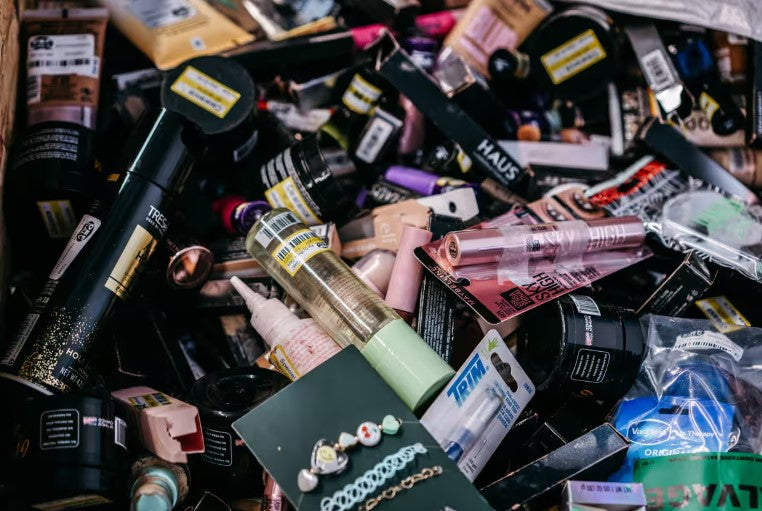
Are Your Beauty Products Hurting Your Hormones? PFAS in Skincare
Share
How PFAS Affect Hormonal Health
PFAS are known endocrine disruptors, meaning they interfere with hormone production and regulation. Exposure to PFAS has been linked to:
-
Thyroid dysfunction – PFAS may alter thyroid hormone levels, affecting metabolism and energy balance (Boisvert et al., 2022).
-
Reproductive issues – Studies indicate a connection between PFAS and menstrual irregularities, lower fertility rates, and polycystic ovary syndrome (PCOS) (Jensen et al., 2020).
-
Increased risk of hormonal disorders – Long-term exposure may contribute to imbalances in estrogen and testosterone, potentially leading to conditions like endometriosis and reduced sperm quality (Pan et al., 2022).
Common Beauty Products Containing PFAS
PFAS can be found in various personal care products, including:
-
Foundation and concealer – Used to enhance smooth application and long-lasting wear.
-
Lipstick and lip balm – Provides water resistance and prolonged color retention.
-
Mascara and eyeliner – Helps create waterproof and smudge-resistant formulas.
-
Moisturizers and sunscreens – Added for their oil-repellent properties.
How to Avoid PFAS in Skincare
Reducing exposure to PFAS in cosmetics can help protect hormonal health. Here’s how you can make safer choices:
-
Check ingredient labels – Avoid products with ingredients like "PTFE" or "perfluoro-" listed on the packaging.
-
Choose clean beauty brands – Opt for brands that explicitly state they are PFAS-free.
-
Use EWG’s Skin Deep database – This resource helps identify safer beauty products.
-
Reduce reliance on waterproof or long-lasting formulas – These often contain PFAS to enhance durability.
-
Be mindful of packaging – Some product containers may also contain PFAS, leading to indirect exposure.
Many skincare and beauty products on the market contain PFAS, which may pose risks to hormonal health. By choosing cleaner alternatives and being more aware of ingredient labels, consumers can take proactive steps toward reducing exposure and supporting their well-being.
Take charge of your fertility journey today with PureFertility and embrace the future you deserve, take a look at PureFertility today!
References
-
Boisvert, G., Sonne, C., Rigét, F. F., Letcher, R. J., & Dietz, R. (2022). The effects of PFAS exposure on thyroid hormone disruption. Environmental Research, 210, 112-124.
Grandjean, P., & Clapp, R. (2021). Perfluorinated compounds: Persistence and effects on human health. Environmental Health Perspectives, 129(4), 460-478.
-
Jensen, T. K., Timmermann, A. G., Rossing, L. I., Ramlau-Hansen, C. H., Vermeulen, R., & Hauser, R. (2020). Association between PFAS exposure and female reproductive health. Journal of Environmental Science & Health, 55(3), 245-260.
Pan, Y., Zhang, H., Cui, Q., & Sheng, N. (2022). Perfluorinated chemicals and their association with reproductive outcomes. Reproductive Toxicology, 108, 112-124.
